Spectacular Start to 10th Anniversary Šibenik Dance Festival
July 20, 2021 – The streets of Šibenik are overflowing with life this July. On town squares, streets and in parks, different events appeal to every generation and demographic. On Monday 19th, the opening of the Supertoon animation festival sees families gather to watch feature-length cartoons in the Old Town streets. Above their heads, in St. Michael's Fortress, a much more startling evening's entertainment is taking place. It's the opening of the 10th anniversary Šibenik Dance Festival.
'Burning Water' by renowned Greek choreographer Andonis Foniadakis is not always easy to watch. Commissioned specifically for the ballet company of Croatian National Theatre Ivan pl. Zajc in Rijeka, the dancers have had a year to perfect it since its Capital of Culture premiere.
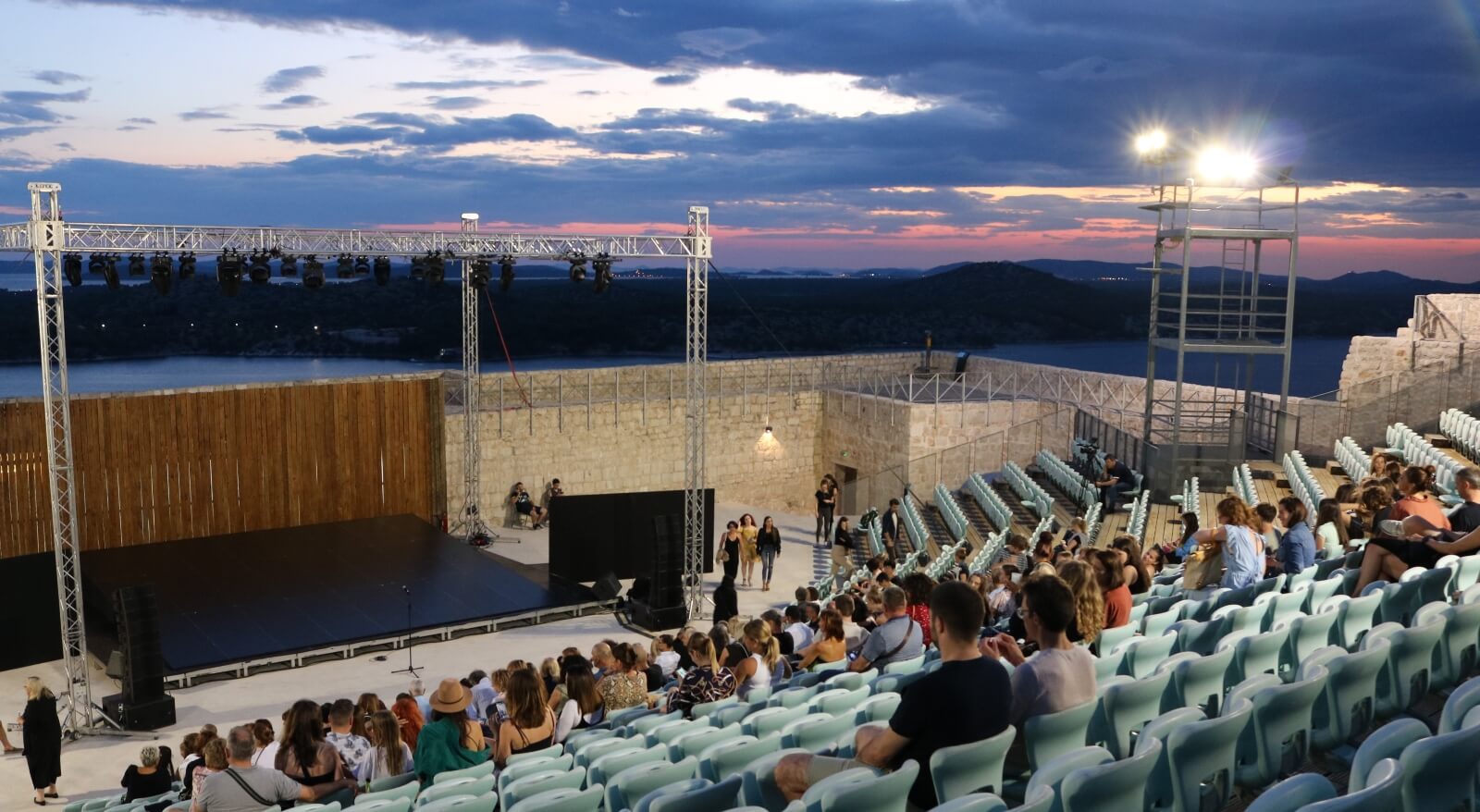 A spectacular backdrop of Šibenik, the Adriatic and sunset greet attendees at the opening of the 10th annual Šibenik Dance Festival © Marc Rowlands.
A spectacular backdrop of Šibenik, the Adriatic and sunset greet attendees at the opening of the 10th annual Šibenik Dance Festival © Marc Rowlands.
The audience takes their seats at sunset. But, as the performance begins, everything is enveloped in black. Minimally lit, androgynous dancers arrive on stage in a most unorthodox manner, their bodies twisted and contorted beyond regular, recognisable movement.
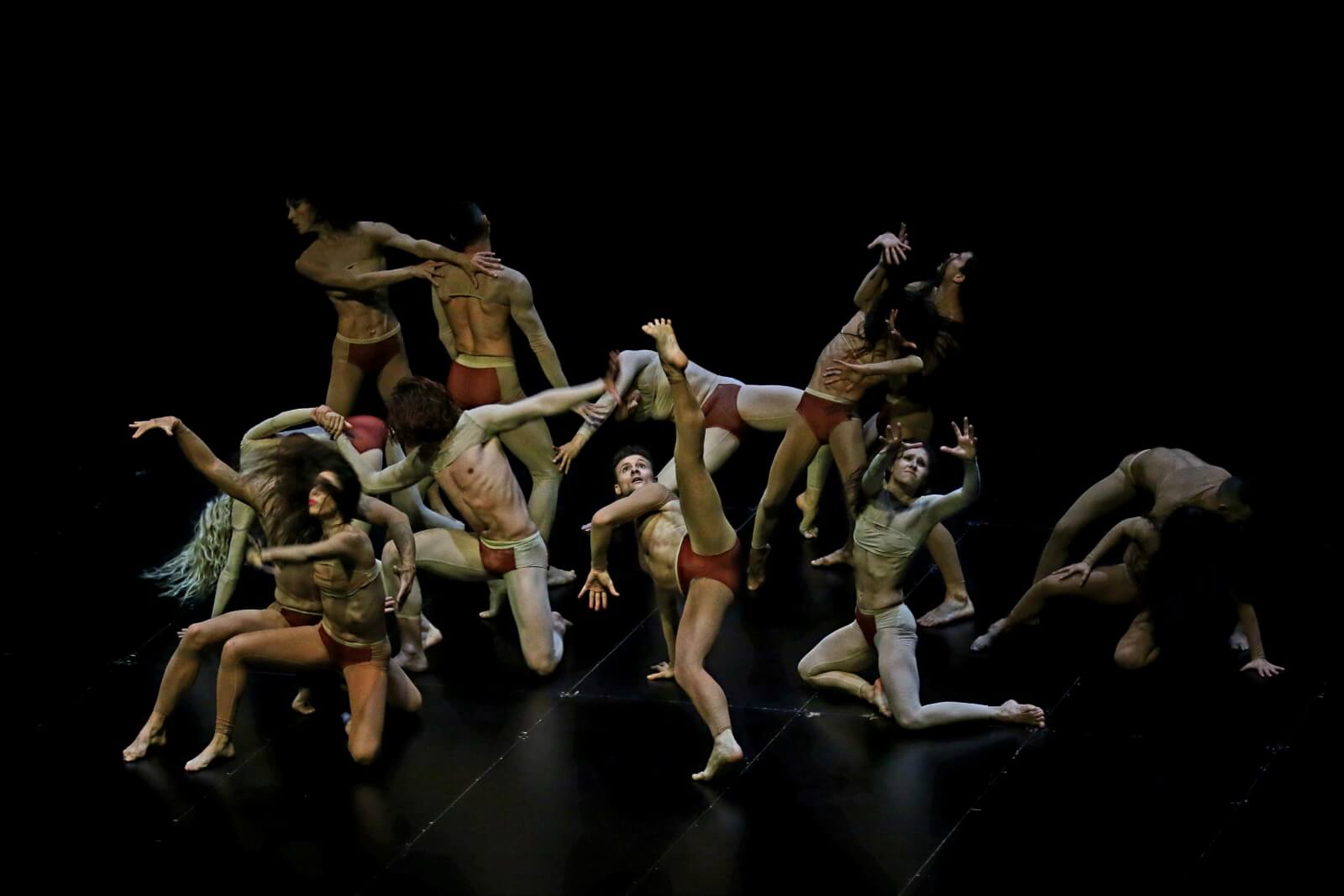
“That is the signature style of Andonis Foniadakis,” says Šibenik Dance Festival director Zorana Mihelčić. “Everybody knows it because he's so well established; very nervous, interrupted movements. I personally love his work and right now he's one of the most frequently requested choreographers in the world.”

Having helmed Šibenik Dance Festival from its start to this, its 10th anniversary, Mihelčić is more than satisfied with its progress. And, so she should be. In the seats on opening night, German, English, Slovenian, Croatian, and at least one Scandinavian language are heard. On the stage, an international touring ballet troupe and world-renowned choreographer. This is a far cry from the festival's beginnings.
Evolution of Šibenik Dance Festival
“We started Šibenik Dance Festival 10 years ago as a small review of dance studios and awarded dancers. But not, professionals,” says Mihelčić. “At that time, it was held in the square just in front of Šibenik cathedral. It grew steadily each year until 2014 when the first of our fortresses was renovated. Within a month of St. Michael's opening, we secured permission to hold our opening night there. That really put us on the map and we've been there ever since.”
“We now have two programmes running simultaneously; we kept the amateur and student dancers programme, which was our foundation. But, now we have professional, international dance companies as a major part of each event.”
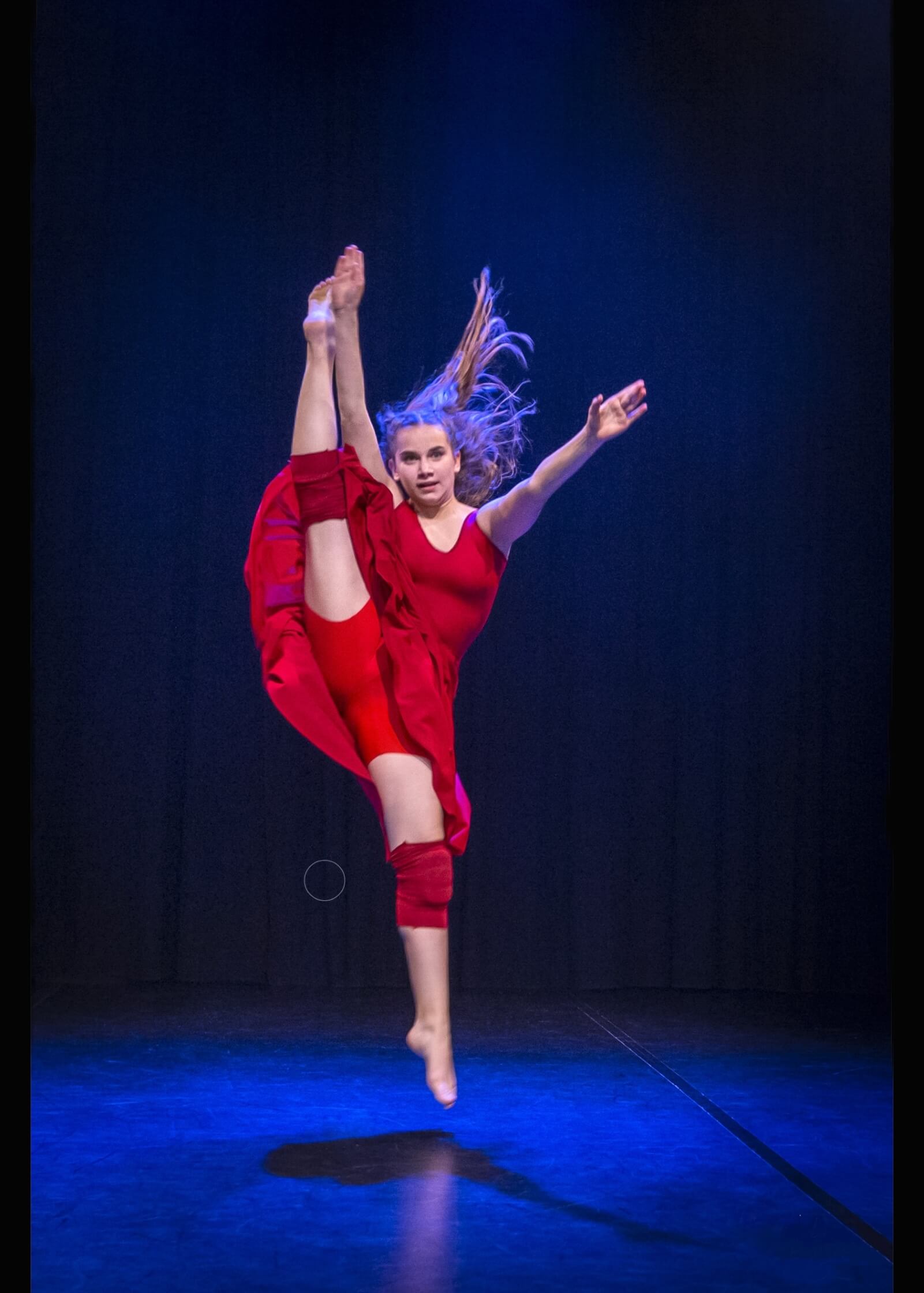 Ilijana's dancers, part of the student / fringe programme of Šibenik Dance Festival © Mladen Božičković
Ilijana's dancers, part of the student / fringe programme of Šibenik Dance Festival © Mladen Božičković
Continuing throughout this week, Šibenik Dance Festival manages to entertain everyone currently in Šibenik. Committed fans of contemporary dance and art will visit more spectacular venues like Barone Fortress. On Wednesday 21st, a visit there by Zoltán Fodor's Inversedance – an incredibly well-respected dance company from Budapest. They arrive with a new performance 'You and the World'. Its premiere was just one month ago. The next night, Thursday 22 July, jazz and hip hop dancing, again at Fortress Barone and the Association of Ballet Artists of Serbia.
In Arsen Art House, conceptual and contemporary pieces by Rita Gobi from Hungary and regional star Isidora Stanišić on Tuesday 20th. The festival concludes in the same venue on Friday 23 with a conceptual piece called 'Body Shots'. It's a co-production between Germany's CocoonDance Company and Zagreb Dance Center.
 Body Shots by CocoonDance / Zagreb Dance Center © Neven Petrović.
Body Shots by CocoonDance / Zagreb Dance Center © Neven Petrović.
Although, for many visitors, the highlight of Šibenik Dance Festival is still the public performance on the city streets by youngsters and amateur dancers.
“This year, it's a really exciting mixture, accessible to everyone,” says Zorana Mihelčić, clearly excited about the performances to come. “20 minutes of great tap dancers from Dubrovnik, then 10 to 15 minutes of very young students from the ballet school in Split. After that, contemporary dancers from Požega, also salsa, hip hop fusion, classical and contemporary ballet. It will be great.”
 As shown above, final applause for the 2021 festival opening night. Festival director Zorana Mihelčić can be seen in the bottom right-hand corner.
As shown above, final applause for the 2021 festival opening night. Festival director Zorana Mihelčić can be seen in the bottom right-hand corner.
The free public performance of youngsters and amateurs at the 10th anniversary of Šibenik Dance Festival takes place at Poljana square, just in front of Šibenik National Theatre on Wednesday 21 and Thursday 22 July between the hours of 19.00 and 22.00.
All photos © Šibenik Dance Festival unless otherwise accredited.
Unique and UNESCO: The Fascinating and Futuristic Fortresses of Šibenik
May 12, 2021 – Using vivid modern techniques like 3D mapping and augmented reality, each of the Fortresses of Šibenik is unique. Here, we take a closer look at these fascinating, must-visit venues.
The city of Šibenik is surrounded by some of the most distinctive waters in Dalmatia. To the city's northeast, the great Krka river drops over gushing waterfalls, meeting Cikola river in the epic Krka National Park. Thereafter, it flows first into Lake Prokljan, then the bay of Šibenik. Around the water's edge in Šibenik, people enjoying in bars and restaurants. Or, in warmer months, sunbathing and swimming in the sea.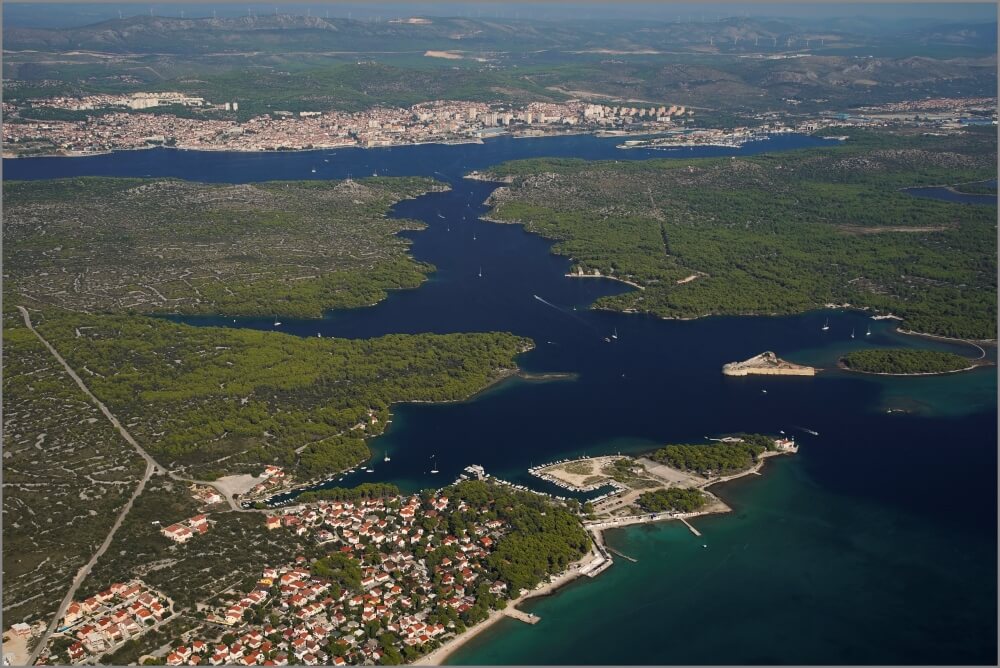 The Channel of St. Ante, with the City of Šibenik in the background and St. Nikola's Fortress in the foreground @ TZ Šibenik.
The Channel of St. Ante, with the City of Šibenik in the background and St. Nikola's Fortress in the foreground @ TZ Šibenik.
And yet, these special waters are not the only thing that makes Šibenik unique. There's much more to this city than just the sea. Not least, the unique Fortresses of Šibenik.
Actually, it's not that unusual to find a fortress, castle or fortifications in Croatian cities. After all, for several hundred years, this was the frontline of European defense against the invading Ottoman empire. However, Šibenik is unique within the entire Balkan region to have not one, but four fortresses from that era. Not only are they very well preserved, but also they have been completely renovated and thoroughly modernized.
Surprising multimedia and fascinating digital content now combine with fantastic views and unique architecture to draw visitors to the Fortresses of Šibenik. Subsequently, the four Fortresses of Šibenik now make up an unmissable part of any visit to the city.
Fortresses of Šibenik: St. Michael's Fortress
 Fortresses of Šibenik: St. Michael's Fortress @ TZ Šibenik.
Fortresses of Šibenik: St. Michael's Fortress @ TZ Šibenik.
The oldest of the four fortresses of Šibenik, iconic St. Michael's is today known as one of the most prestigious open-air concert stages on this side of the Adriatic. But, it also a place where you can learn fascinating history via spectacular modern technology. Deep within the fortress, 3D mapping techniques make 15th-century water tanks spring to life. This vivid display will transport you through centuries of exciting Šibenik history, including the story of St. Michael and the dragon.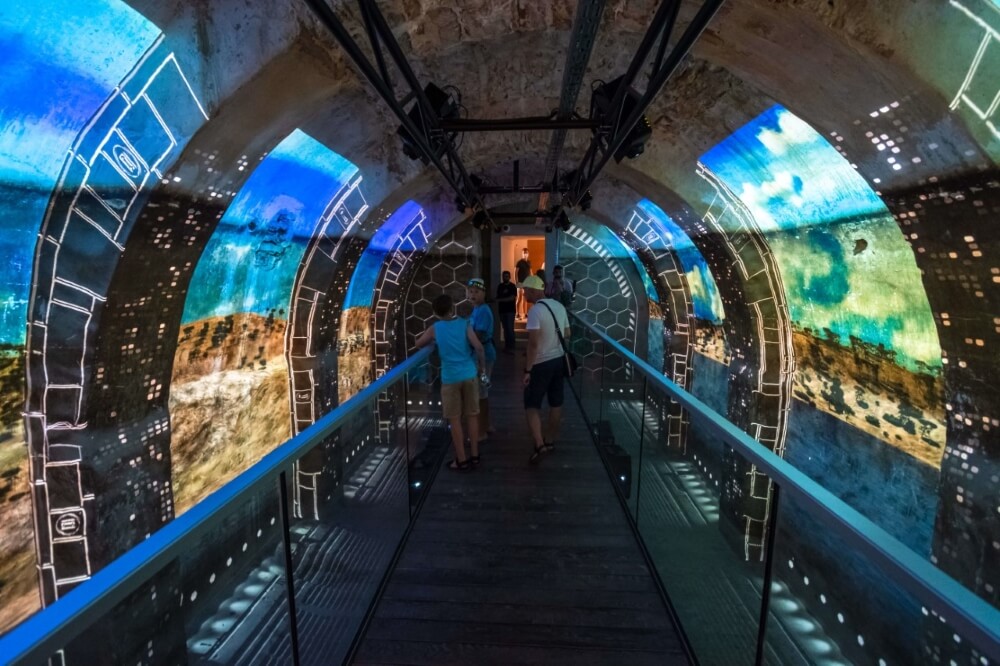 Vivid multimedia trails through the Fortresses of Šibenik @ TZ Šibenik.
Vivid multimedia trails through the Fortresses of Šibenik @ TZ Šibenik.
Fortresses of Šibenik: Barone Fortress
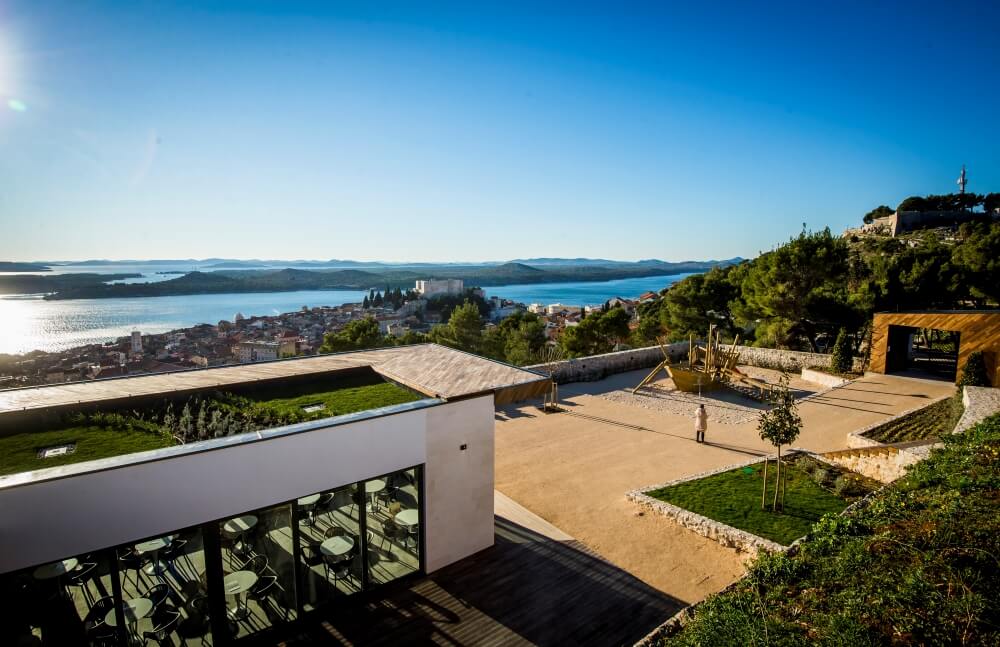 Barone Fortress @ TZ Šibenik.
Barone Fortress @ TZ Šibenik.
The latest of the four Fortresses of Šibenik to be renovated, in Barone Fortress you get a whole new dimension of reality. Actually, Barone Fortress successfully repelled the fiercest attacks of the Ottomans in the 17th century and therefore changed the course of history in this area. Via augmented reality (AR), you can relive the sights and sounds of these key moments in European history. After the thrill of experiencing the battles, you'd be well advised to take a breather on the Barone Bar’s terrace. There, you can enjoy views of the entire city, while any younger visitors can have fun on the children’s playground. Vivid multimedia trails through the Fortresses of Šibenik @ TZ Šibenik.
Vivid multimedia trails through the Fortresses of Šibenik @ TZ Šibenik.
Fortresses of Šibenik: St. Nikola's Fortress
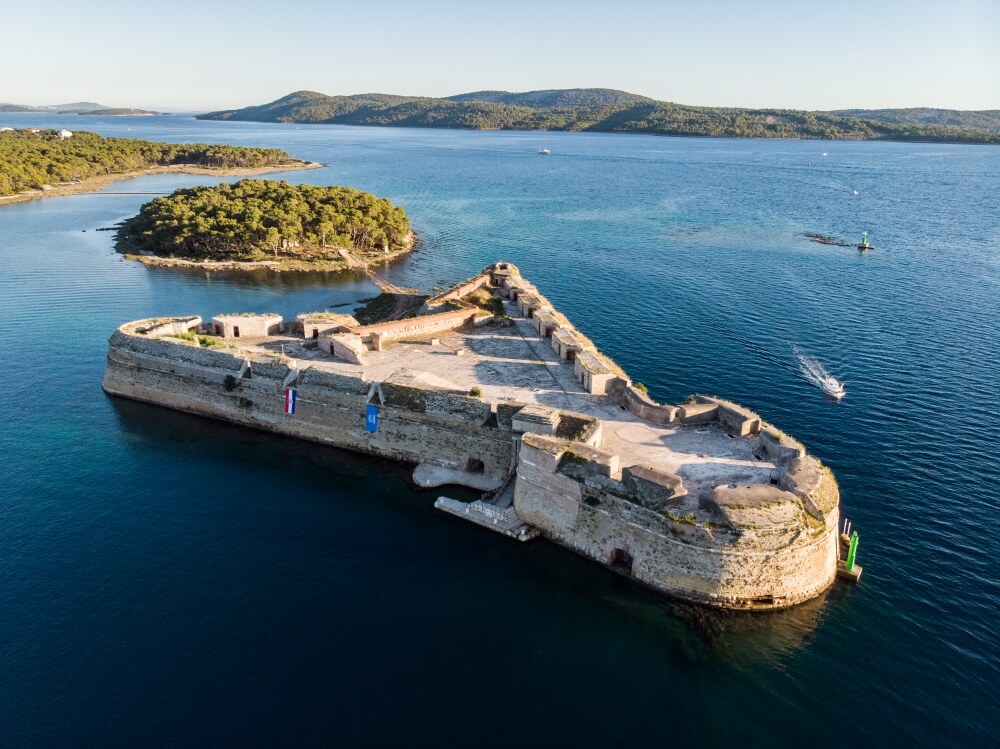 Fortresses of Šibenik: The UNESCO-protected St. Nikola's Fortress @ TZ Šibenik.
Fortresses of Šibenik: The UNESCO-protected St. Nikola's Fortress @ TZ Šibenik.
Within the Fortresses of Šibenik, St. Nicholas is unique. Not only is it the only one that sits on its own island within the sea, but also is a unique Renaissance-style Venetian fortification. As such, it is protected as a UNESCO monument of world architectural heritage.
The fortress was built on the island of Ljuljevac, in the Channel of St. Ante, where the waters of Šibenik bay meet the Adriatic. Owing to its protected status, the best way to access the fortress is on an official tour. Lasting around two hours, the tour takes you from Šibenik down the channel by boat. After arriving at the fortress, you're guided rounded the structure on a tour detailing the architectural highlights and history.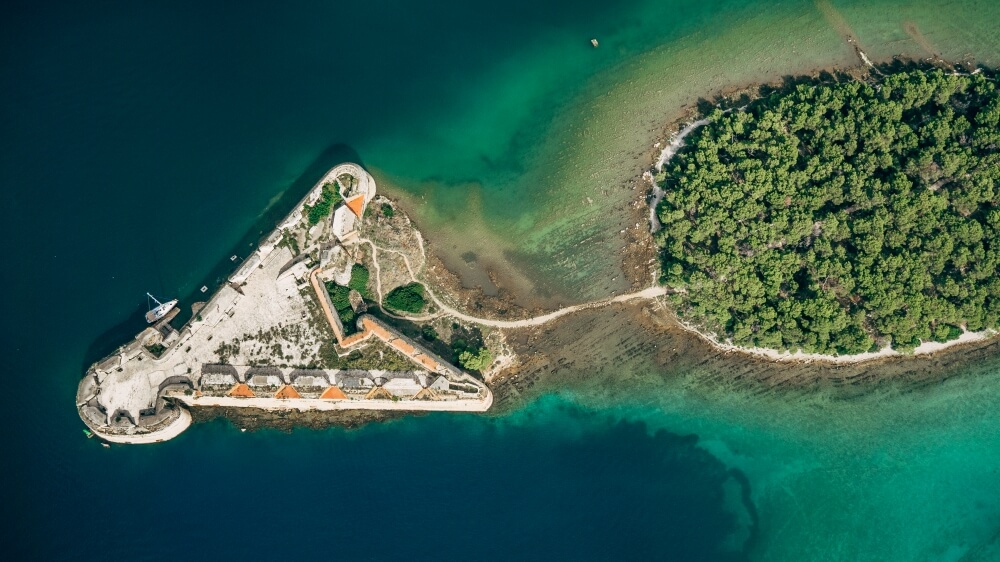 Fortresses of Šibenik: The UNESCO-protected St. Nikola's Fortress @ TZ Šibenik.
Fortresses of Šibenik: The UNESCO-protected St. Nikola's Fortress @ TZ Šibenik.
Fortresses of Šibenik: St. John's Fortress
 St. John's Fortress @ TZ Šibenik.
St. John's Fortress @ TZ Šibenik.
The medieval church of St. John the Baptist that once stood on a hill, north of Šibenik's historical centre, dates to at least 1444. It is around this church that St. John's Fortress rose up. Naturally, it's also where the name comes from. In early 1646, when it was speedily built, alongside its peers, it helped save the city from the Ottomans. Later, it continued to be used by resident armies all the way up until the times of Yugoslavia. Today, St. John's is the last of the Fortresses of Šibenik to be undergoing reconstruction. Its completion is imminent and its official reopening is planned for September 2021.
Three of the Fortresses of Šibenik are included in the pan-European Fortresses of FORTITUDE project, which links significant sites in Croatia to some in Montenegro and Bosnia. If you want to know more about that project - and learn a little more about the history of some Šibenik fortresses, then look here.
Two New Traces of Medieval Beginnings of Sibenik
December 28, 2020 – The Sibenik City Museum and the Sibenik Fortress of Culture came up with two new traces of the medieval beginnings of Sibenik, one of the oldest Croatian native towns on the Adriatic.
As reported from Fortress of Culture, they came up with new findings belonging to the early Middle Ages only a few days before the 954th anniversary of the first mention of Šibenik. Namely, Šibenik was first mentioned on Christmas Day in 1066 in the deed of gift of King Petar Krešimir IV. That is why it is also called Krešimir's city.
The Šibenik City Museum, in cooperation with the Nature Institute of Šibenik-Knin County, has been researching the cave of St. Anthony the Great, located in the canal of the same name. The head of the research, senior curator of the Šibenik Museum Emil Podrug, gathered a team to write a scientific paper on this site – eight experts from five institutions and three cities (Šibenik, Split, Zagreb). The research results show that the cave was used from the 13th or 14th until the 20th century.

View of the St. Anthony the Great's Cave on the map of Martin Kolunić Rota from 1571 / Source: Fortress of Culture
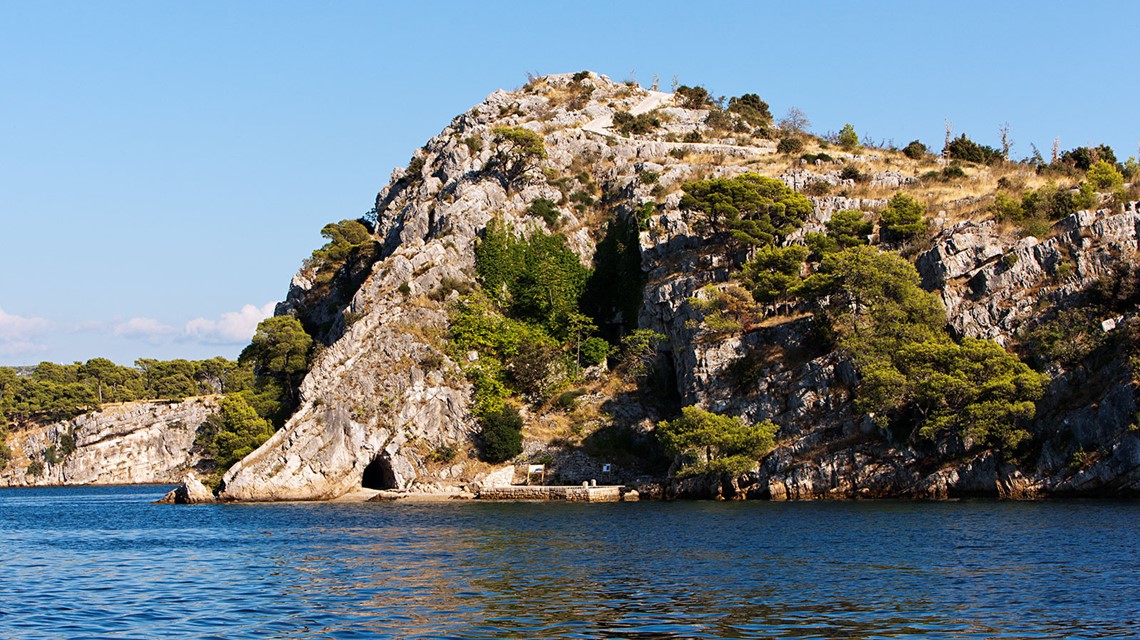
Cave of St. Anthony the Great today / Source: Fortress of Culture
Plait from the middle of the 9th century
However, during a recent inspection of a baroque altar's remains in the cave, a well-preserved fragment of the altar partition pluteus (sculpture) decorated with a plait was found. It is a series of two knotted three-bar circles decorated with whirling rosettes.
Based on similar examples from Rižinice near Klis and Kašić near Zadar, it can be reliably declared as the work of the so-called Stonemasonry workshops from Prince Trpimir's time and located no later than the middle of the 9th century.
"A stone fragment with a plait into the cave was most likely brought in as a secondary building material. It should be noted that the immediate vicinity of Šibenik is not rich in archeological sites from the era of national rulers. In addition to the very important site of St. Lovre in Grušine near Donje polje, fragments of plait were found at only a few locations, mostly also as a secondary material," said Željko Krnčević, director of the Šibenik Museum.
Examples of plaits from Kašić and Rižinice / Source: Fortress of Culture
One of these rare locations is the Fortress of St. Mihovil. It is less known that a stone fragment with three-bar braids was found in the fortress as far back as 1911. Also, an oil lamp from the second half of the 9th century was found in the 1990s. The site has been used for defense since Illyrian times, and it is believed that most of the ramparts preserved today were built during the Venetian rule.
Šibenik is a century or two older
However, some walls seem older, and today's non-invasive archaeological methods provide new opportunities for exploration. One such wall is the deepest part of the northeastern rampart, whose plaster contained pieces of coal.
Experts from the Ruđer Bošković Institute performed the chemical C14 dating of coal.
A segment of the old wall, the northeastern rampart of the Fortress of St. Michael / Source: Fortress of Culture
The analysis results show date from the very end of the 9th or through the 10th century, more precisely between 881 and 978. This suggests that this part of the ramparts was built during the said period. Just a few meters away, the already mentioned oil lamp was found. The northeastern rampart's foundation extends about forty meters in the northwest-southeast direction, and a Venetian rampart from the 15th and 16th centuries was added to it.
"It was clear before that Šibenik already had to be a developed settlement to host King Petar Krešimir and his court in 1066 during the signing of the well-known deed of gift. These two new clues provide us with additional confirmation and suggest that we move the origin and continuity of Croatian Šibenik a century or two earlier. Perhaps more importantly, these findings motivate us to explore further. We believe that a systematic approach and continuous work, which includes the use of new methods, can lead to further knowledge of even the earliest periods in the history of Šibenik," said Josip Pavić from the Fortress of Culture.
To read more about lifestyle in Croatia, follow TCN's dedicated page.


